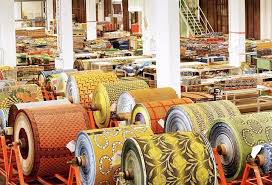Government Unveils Plan to Grow Textile and Garment Industry to $2bn by 2033
The government is projecting to scale Ghana’s textile and garment manufacturing industry to a value exceeding US$2 billion by 2033, under a new policy framework aimed at revitalising the sector.
According to the Ministry of Trade, Agribusiness and Industry, the expansion drive is expected to attract US$1.2 billion in fresh investments, generate about 150,000 direct and indirect jobs, and revive cotton cultivation across 50,000 hectares of farmland nationwide.
Speaking at a stakeholder validation workshop on the draft Textiles and Garment Manufacturing Policy in Accra, Deputy Minister of Trade, Agribusiness and Industry, Samson Ahi, reaffirmed government’s commitment to repositioning the industry as a major contributor to economic growth.
“We aim to scale the industry to a value of over US$2 billion, attract US$1.2 billion in new investments, create 150,000 jobs, and ensure quality cotton production across 50,000 hectares of farmland,” Mr Ahi stated.
“These objectives are ambitious, but they are achievable through collective effort. Today’s workshop is not just about reviewing a document; it is about setting a shared roadmap that will shape the future of the industry.”
Minister of Labour, Jobs and Employment, Dr Abdul-Rashid Pelpuo, urged stakeholders to ensure that policy measures support inclusive job creation, particularly for women and youth, while maintaining merit-based recruitment.
“Do not create policies that lead to overstaffing or political favoritism. Hire people based on their competence and capacity to drive change. Our focus should be on building a future for young people. At the time we took over, nearly 15% of youth were unemployed. We need a mindset reset—a reset of the economy,” Dr Pelpuo noted.
Once finalised, the Textiles and Garment Manufacturing Policy is expected to serve as a blueprint for sustainable growth, investment attraction and export competitiveness in the sector.








